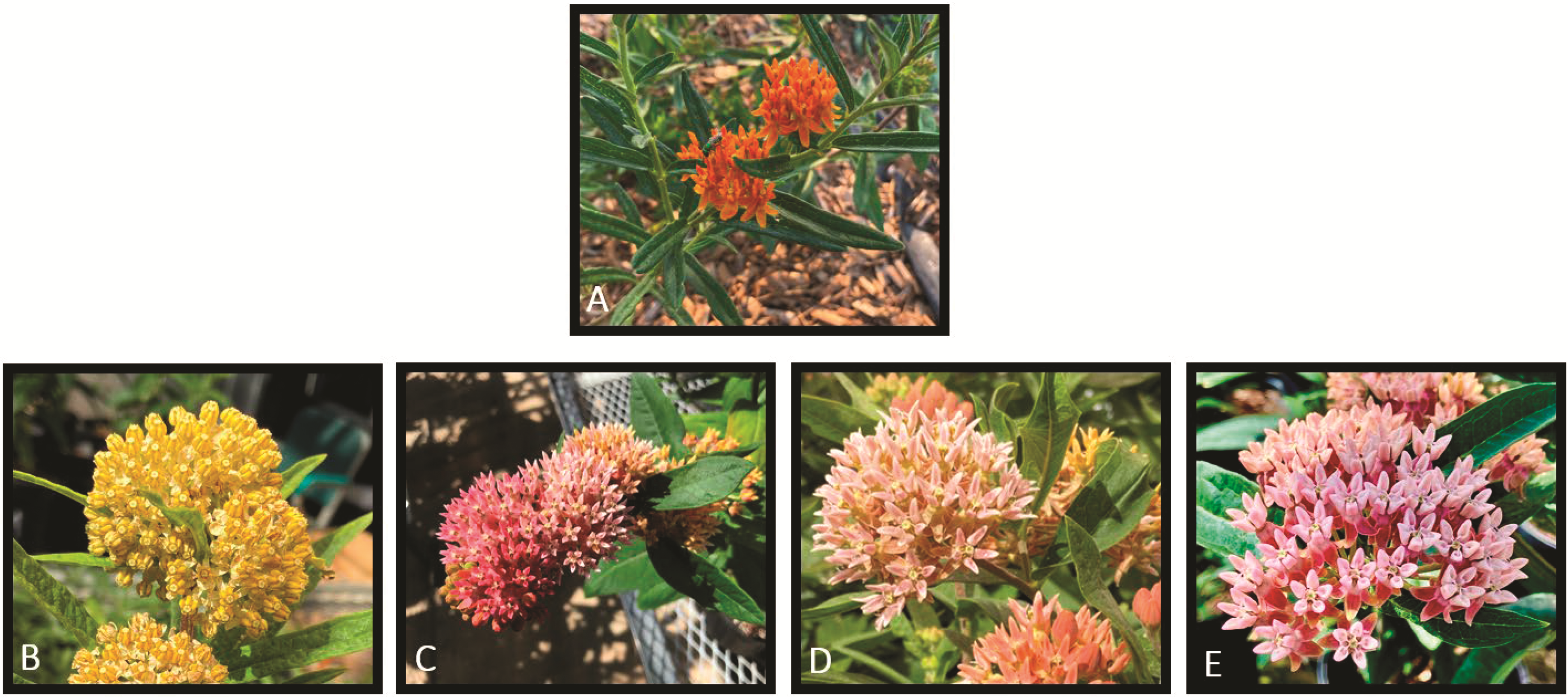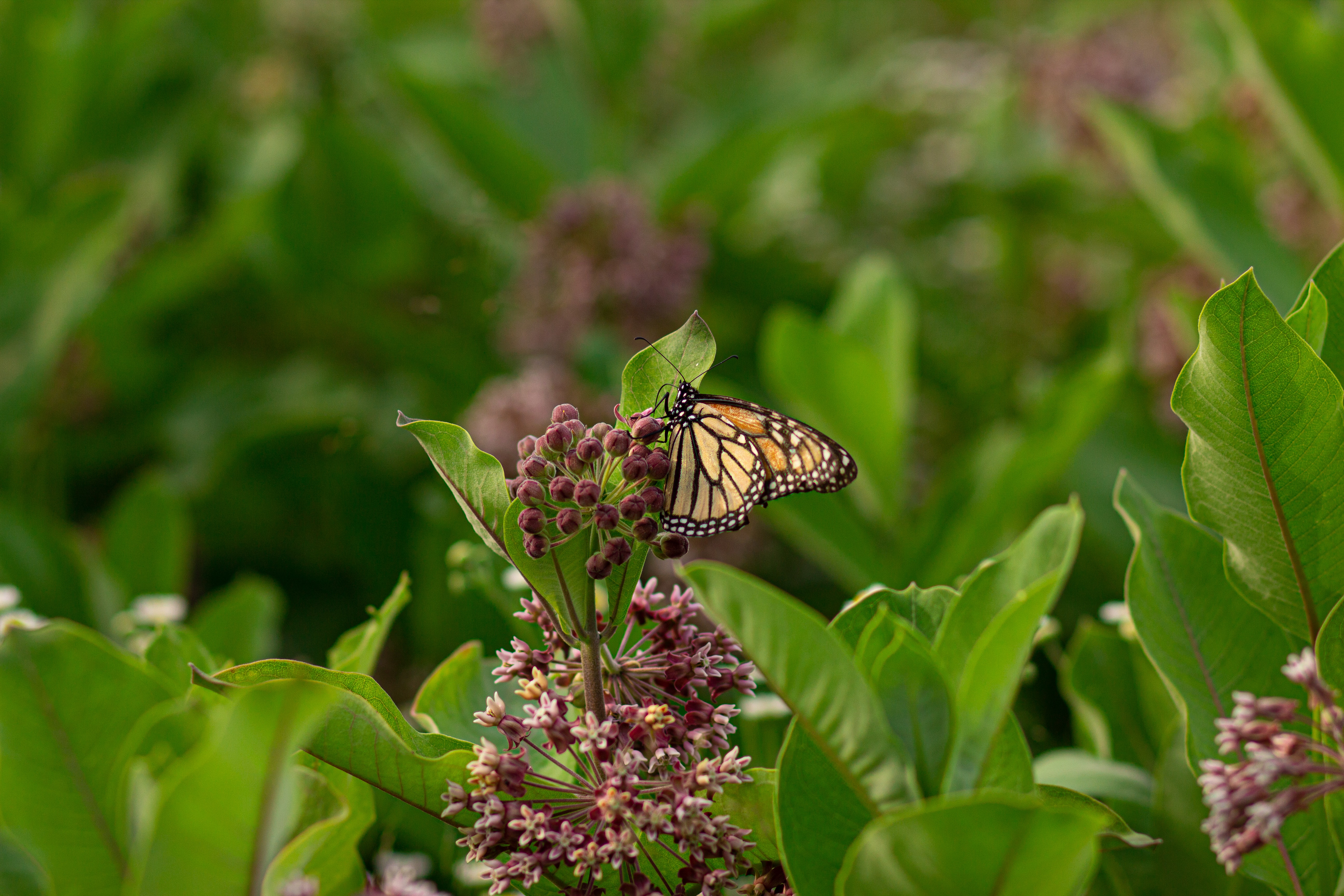Ecological Impacts of Milkweed Hybrids
Introduction:
Horticulture and landscaping nurseries are increasingly introducing native plants to the market for both ecological and ornamental value. However, there are currently insufficient propagation protocols for native plants, which can lead to negative, unexpected ecological consequences. This study calls for increased ecological awareness and research before native plants are released in the horticulture market.
Set Up:
In this study, researchers assessed the ecological impact of four interspecific hybrids of milkweed (Asclepias tuberosa × hirtella; Asclepias tuberosa × syriaca; Asclepias tuberosa × speciosa; and Asclepias tuberosa × purpurascens), prior to market release. The plants were tested to access the hybrids’ ability to outcrossing with native milkweed populations and their pollinating ability. The three types of controlled crosses investigated were self-compatibility, full-sibling-compatibility, and backcross-compatibility of the hybrid populations.
Species used in this study:
- Butterfly weed (Asclepias tuberosa L.) (maternal parent)
- Tall green milkweed (Asclepias hirtella)
- Common milkweed (Asclepias syriaca L.)
- Showy milkweed (Asclepias speciosa Torr.)
- Purple milkweed (Asclepias purpurascens L.)
The milkweed was grown at the College Station Greenhouse at the University of Georgia. The greenhouse provided supplemental LED light with a photoperiod of 14 hours and a daily light integral (DLI) of 20 mol·m−2·d−1. Photoperiod and DLI were measured using Apogee ePAR light sensors (SQ-610-SS Series).

Image 1. Species and interspecific hybrids of Asclepias used to assess ecological impacts. (A) the maternal species of all hybrid genotypes, Asclepias tuberosa. Interspecific hybrids of Asclepias: (B) A. tuberosa × hirtella, (C) A. tuberosa × syriaca, (D) A. tuberosa × speciosa, (E) and A. tuberosa × purpurascens.
Results:
Interspecific hybrids of Asclepias were unable to successfully fertilize A. tuberosa (the maternal plant), indicating minimal likelihood of outcrossing into natural populations. Hybrids lacked self-fertilization and the ability to cross with full-siblings, indicating low levels of establishment of the interspecific hybrids into natural environments.
Nectar composition and nectar concentration were similar among hybrids and A. tuberosa, revealing there was not a loss in floral rewards, despite trait selection for horticulturally preferable traits. Pollinator abundance was higher on hybrids than on A. tuberosa, and richness and diversity of pollinator species were similar among hybrids and A. tuberosa, indicating that the hybrids can offer similar or more ecosystem services as A. tuberosa.
Conclusion:
The researchers suggest that new cultivars of native species should be shown to support diverse groups of pollinator species, with minimal loss of floral rewards, and with minimal likelihood of introgression, outcrossing, and establishment into natural populations before they are released into the horticultural market.

Image 2. Photo by Lasclay.com; Monarch butterfly on a milkweed flower
- Justin Peterman
- Conor Fair
- Hannah Brown
- Kris Braman
- Marc W. van Iersel
